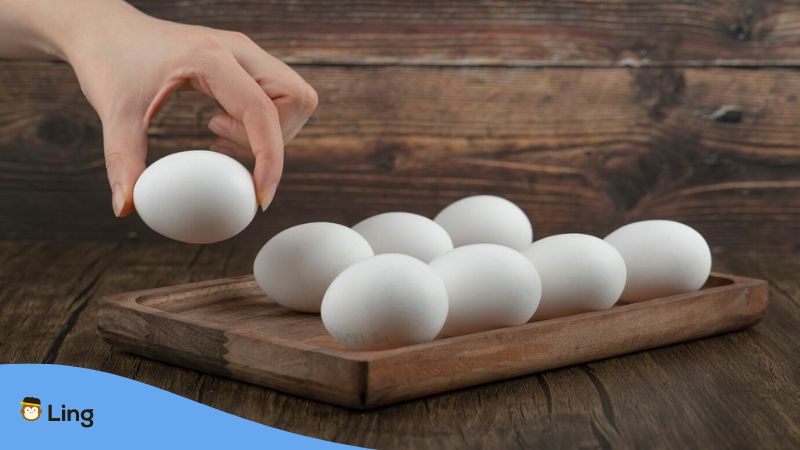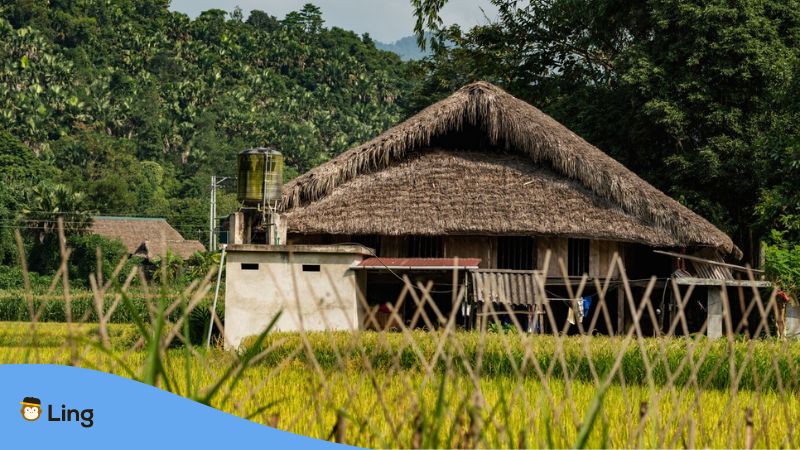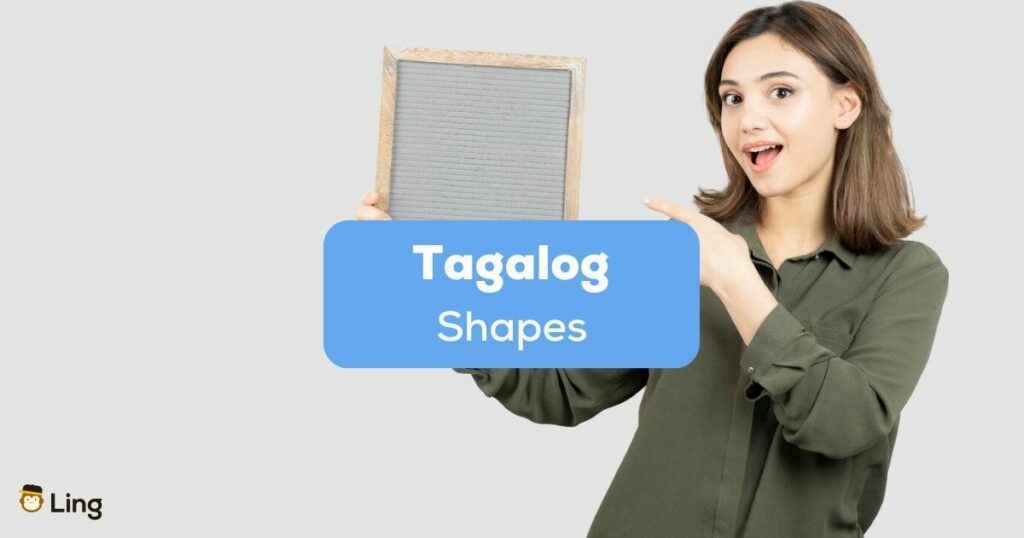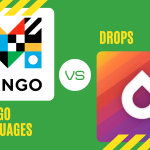The Tagalog words for shape are hugis (in singular form) and mga hugis (plural form). Most of the shapes in Tagalog words are coined and adopted from the Spanish language and English language. Moreover, other translations of shapes in Tagalog came from Filipino phrases and tambalang salita (compound words).
I can guarantee you that learning the shapes in Tagalog by just reading this post will help you master how they are called in the Philippines. Considering that the Filipino language has a considerable resemblance to the English language in terms of specific details like alphabet and pronunciations, it is fairly easy to learn Tagalog.
Table Of Contents
List Of 10 Tagalog Shapes
It’s now the time to gear up as I present you the 10 common Tagalog shapes in today’s post. But just to let you know, you can also learn Tagalog shapes with the Ling app. It’s a language app where you can learn 60+ languages easily and effectively while having fun. You can get it for free from the App Store and Google Play.
Now, let me teach you how to say the shapes in Tagalog language. If you are ready for that, then let the learning begin!
1. Tatsulok (Triangle)
The triangle shape is called tasulok in Tagalog. This term came from the Tagalog phrase tatlong sulok, which represents the three sides of a triangle.
This is also a well-known shape of every Filipino child because there are a lot of objects that are similar to this shape, like bahay kubo (nipa hut), bundok (mountain), and bulkan (volcano). These living objects are ordinarily seen as a natural site in the Philippines. That’s why parents use these as an example in teaching their children about shapes.
2. Kuwadrado / Parisukat (Square)
Pronunciation: Ku-wad-rah-do / Pah-ri-su-kat
The Tagalog word for square is kuwadrado or parasukat. The term kuwadrado is similar to the Spanish word cuadrado with the same meaning. Philippine objects with a square shape are bintana (window) and lamesa (table).
3. Bilog (Circle)
Pronunciation: Bih-log
One of the recognized shapes in the Philippines is the circle or bilog. This Tagalog term is often associated with other Filipino objects like gin bilog (a Filipino liquor) and hugis bilog na prutas sa bagong taon (circle-shaped fruits in celebrating New Year as a symbol of luck).

4. Habilog / Obalo (Oval)
Pronunciation: Hah-bi-log / Oh-ba-lo
Oval or obalo and habilog in Tagalog can also be defined as an egg shape. The difference between these two Tagalog shapes is that the obalo is used as a noun while the habilog is used as an adjective.
5. Bilohaba (Oblong)
Pronunciation: Bi-loh-ha-ba
This shape is similar to an oval, but the distinction is that the oval has two long curves and two short curves. The Tagalog word for oblong is bilohaba. Sample Filipino objects that have oblong shapes are abokado (avocado), otap (Filipino cookies), and kapsula (capsule medicine).
6. Kalahating-Bilog (Semicircle)
Pronunciation: Kah-lah-ha-ting bih-log
This shape is also called semisirkulo and balinugnog when used as an adjective in Tagalog. Filipino word like bahaghari (rainbow) is one of the common shapes similar to this shape.
7. Parihaba (Rectangle)
Pronunciation: Pah-rih-ha-ba
The rectangle shape in Tagalog is called parihaba. The Tagalog word haba, which means long, has two long sides in the upper and lower sides, and the angles are right angles. Suppose you search the website and look for Filipino objects with a rectangular shape. In that case, you may encounter one of these: baraha (playing cards and flashcards), lamesa (dining table), pisara (blackboard), and watawat (flag).

8. Hugis Puso (Heart Shape)
Pronunciation: Hu-gis puh-so
A heart shape is one of the allegorical shapes in the Philippines, which means love. The word puso is also linked to other Filipino foods like puso ng saging (heart of banana) and puso rice (hanging rice in Cebu) because of their shape. Therefore, the Tagalog word for heart shape is hugis puso.
If you wish to visit the Philippines and are interested in trying the mentioned food above, it’s more fun to take pictures of them and compare if they are similar to the geometric heart shape.
9. Kubo (Cube)
Pronunciation: Kuh-boh
We all know that a cube is a type of three-dimensional shape and is oftentimes used by a child to play (Rubik’s cube and dice). Furthermore, there are many Tagalog translations of cubes, like kuwadrado, tangkalag, and kubiko.
On the other hand, Filipino scholars published several Filipino reference books that prefer to use kubo as the Tagalog word for the cube. For this reason, the word kubo has a significant meaning in Filipino architecture, which is the bahay kubo (nipa hut). The figure of the body of a bahay kubo is similar to the cube. Thus, a Filipino author proposed to use the Tagalog word kubo.
10. Espera (Sphere)
Pronunciation: Es-peh-rah
A ball is an example of a sphere-shaped object. In the Philippines, jolen/holen (marbles) are an example of a sphere-shaped object that was frequently used by every child during the ’90s and early ’20s to play with a group of boys. The Tagalog word for the sphere is espera.
Other Shapes In Tagalog
What we have discussed above are the common shapes in Tagalog that every Filipino understands. Aside from those, there are also shapes like polygons or poligono in Tagalog that are not commonly mentioned by Filipinos in their everyday life. Instead, they prefer to use the English term for a certain shape. Here are some of them:
Shapes In Filipino Culture
In Filipino culture, shapes mean more than just lines and angles. They tell stories, show what Filipinos believe in, and keep them connected to their past. From the houses they live in to the smallest details of their everyday lives, shapes are all around them. They have special meanings and play an important role in their culture.
The Circle In Indigenous Rituals And Symbolism
Circles are a common sight in the Philippines! They stand for togetherness and things that never end. For instance, the T’boli people weave circles into their t’nalak cloth because they think it will protect them and bring good luck. Additionally, the old Filipino alphabet, baybayin, uses a circle for the “O” sound. This reminds them that life comes full circle, time keeps changing, and everything is connected.

Triangles In Traditional Dwellings And Sacred Geometry
Triangles make Filipino houses strong! You can see them in the roofs of bahay kubo and bahay na bato houses. This special shape isn’t just good for the rain – it stands for life, faith, and where you came from. Triangles are also important in old beliefs—just look at the lingling-o amulet. Its three points stand for land, sea, and sky, the building blocks of the world!
Rectangles And The Ancestral Banig
Rectangles give Pinoys a place to rest their heads and tell their stories. The banig, those colorful woven mats, are made of tons of rectangles! Each one can show scenes from everyday life, nature, or their favorite legends. Moreover, Fipinos use banigs for so much more than just sleeping – they’re where they gather and celebrate important moments.
Spirals In Folk Dance And Art
Spirals make locals think of change and things that keep growing. They’re a big part of Filipino dancing and art. In the singkil dance, for example, dancers twirl and hop between bamboo poles that make a spiral shape. This dance is just like the waves of a sea, showing how strong and graceful you can be! Similarly, some of their ancestors also used spiral tattoos to remember their past and where they were going in life.
Did You Learn Something Today?
We went on a little adventure and learned how to say Tagalog shapes in the Filipino language. From the sturdy tatsulok (triangle) to the gentle bilog (circle), there’s more to them than meets the eye. Shapes, they’re woven into Filipino life, telling stories of home, of beliefs, of everyday moments.
Learning these words, it feels… different, doesn’t it? It’s like you start seeing the Philippines hidden in plain sight. Maybe the curve of a roof reminds you of a word or a pattern on a mat feels familiar now. Every shape becomes a tiny bridge, a way to understand this amazing culture just a little bit better.












